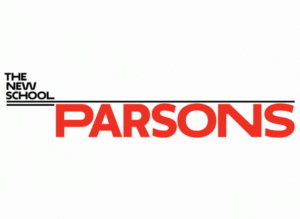
Roshan
1 条学生反馈
多伦多大学密西沙加校区
我现在就读于多大密村,这边不像主校那么繁华也没有主校那么难。相对好进入并且好毕业一点。我修了双专业,CS和MATH 平时除了回家能打几把dota基本没有其它时间去娱乐。所以想让准备去多大读书的学弟学妹们知道,你们的噩梦才刚刚开始,不说了我去写作业了…………
We recommend you to check details of Pricing Plans before changing. Click Here
We recommend you to check details of Pricing Plans before changing. Click Here
就学毕业率

申请入学率

帕森斯设计学院,是一所私立艺术与设计学院,位于纽约市下曼哈顿区格林威治村附近。它是《新学校》的五所大学之一,于 1896 年创立。它是美国第一家提供时装设计,广告,室内设计和图形设计课程的公司。学校提供的本科和研究生课程涵盖建筑设计,策展研究,纺织品和设计以及城市生态学。在帕森斯校友中,有在各自领域做出了重大贡献的时装设计师,摄影师,企业家,设计师,插画家和艺术家。该学院是国家艺术与设计学院协会和独立的艺术与设计学院协会的成员。
(帕森斯设计学院视频介绍)
《新学校》是纽约市的一所私立研究型大学。它成立于 1919 年,最初是社会研究新学院,最初的使命是致力于学术自由和智力探索。从那时起,学校已发展为在大学内设有五个部门。这些机构包括帕森斯设计学院,尤金·朗文理学院,新社会研究学院,公众参与学校以及由曼斯音乐学院,戏剧学院和表演学院组成的表演艺术学院,以及爵士与当代音乐学院。
| 最新年份 | 排名 | ||
|---|---|---|---|
| 2020-2021年 | QS 世界大学艺术与设计专业 | 世界第 2 全美第 1 |
|
| 2020-2021年 | Fashionista 时尚杂志世界艺术大学排行 | 世界第 2 | |
| 2020-2021年 | QUARTZ 新闻设计艺术大学排行 | 全美第 4 | |
| 2020-2021年 | Architectural Digest 建筑文摘室内设计排行 | 全美第 2 | |
| 2020-2021年 | 动画职业评论全美平面设计学校排行 | 全美第 5 |
该机构最初成立为 The Chase School,由美国印象派画家威廉·梅里特·蔡斯于 1896 年成立。蔡斯带领一小批进步人士,他们从纽约的艺术学生联盟中退出,以寻求一种更加自由,更具戏剧性和更个性化的艺术表达。蔡斯在 1898 年更名为纽约艺术学院。
1904 年,弗兰克·阿尔瓦·帕森斯与艺术家罗伯特·亨利一起在学校任教。几年后,他成为纽约艺术学院院长。帕森斯预见到工业革命的新潮,在美国建立了首个时装设计,室内设计,广告和平面设计课程。
1909 年,该学校改名为纽约美术与应用艺术学院,以反映这些产品。帕森斯于 1911 年成为唯一的董事,此职位一直维持到 1930 年他去世。为了纪念帕森斯,在指导学校的发展和塑造视觉艺术教育方面发挥着重要作用,于 1941 年改名为帕森斯设计学院。
随着现代课程的发展,许多成功的设计师与学校紧密相连,到 1960 年代中期,帕森斯已成为“第七大道的训练场”。
1970 年,该学校成为新社会研究学院的一个部门,后来演变为新学校。校园于 1972 年从萨顿广场搬到格林威治村。与一所充满活力并获得充分认可的大学的合并为新的资金和活力提供了来源,这扩大了帕森斯教育的重点。

帕森斯设计学院校徽
帕森斯对时尚界的一些设计师进行了教育,其中包括哈顿·艾图格,唐娜·卡兰,凯·昂格,马克·雅各布斯,亚历山大·王,汤姆·福特,安娜苏,杰森·吴,纳西索·罗德里格斯,索菲·布海,杰克·麦科洛夫和拉萨罗·埃尔南德斯米兹拉希,萨曼莎·斯里普尔,林家辉|,巴巴拉古隆,贺龙普雷斯顿,珍娜·里昂,乔·科普兰和贾斯珀·康兰等。
除时装设计师外,帕森斯还以其贾斯珀·约翰斯,保罗·兰德,亚历山大·卡尔德,罗伊·里希滕斯坦,诺曼·罗克韦尔,杜安·米哈尔斯,艾未未,乔尔·舒马赫(,朱莉·乌梅尔,丹妮尔·马斯特里翁和杰奎琳·汉弗莱斯的母校闻名已故,著名的室内装饰师马里奥·布塔也参加了学校。工业设计师萨拉·特恩布尔毕业于学校。
这所学校是贝拉·哈迪德,尼基·希尔顿·罗斯柴尔德,赛拉·布林克利·库克,安德鲁·麦克菲,安德鲁·麦克菲,马西莫·A·佩莱格里尼,亚历山德拉·冯·菲斯滕贝格等著名学生的选择。
位于 14 街和第五大道的新学校大学中心,一座 LEED 金楼,于 2014 年完工。该建筑除了两层楼的图书馆和演讲厅外,还在纽约市中心的校园内增加了教室,新住宅,计算机实验室,活动设施和自助餐厅。尽管 UC 是所有大学生的中央枢纽,但其大部分教室和工作区都用于帕森斯计划。
西 13 街 2 号/第五大街 66 号通常被称为希拉·约翰逊设计中心。帕森斯校区的主要校园位于曼哈顿区格林威治村的西 13 街 2 号。除教室外,该建筑还包括安娜·玛丽亚和斯蒂芬·凯伦画廊和礼堂,以及阿诺德和希拉·阿隆森美术馆。
该建筑的翻新工程获得了 2009 年国家 AIA 荣誉奖,2009 年 MASNYC 大师奖,2009 年 AIANY 优异奖,2008 年AIA 纽约州卓越奖,2008 年美国建筑师协会纽约/波士顿建筑师协会双年度教育奖。设备设计,2008 SARA / NY 设计优秀奖和 2007 AIANY 项目优异奖。
帕森斯东大楼位于东13街25号,是建筑环境学院的所在地,该学院设有学院的室内设计,照明设计以及建筑和产品设计系。美术系也位于此建筑中。大楼中的设施包括数字和传统制造车间,激光切割实验室,照明实验室,多个计算实验室,材料中心,健康材料库和设计工作室。
帕森斯设计学院在时尚研究方面绝对是著名的,也是流行电视节目 Project Runway 的舞台。帕森斯新学院以其时装设计课程而闻名。这是由于其许多著名的校友,包括马克·雅各布斯,唐娜·卡兰和亚历山大·王。除时装课程外,还有其他创意领域的其他学位课程,包括摄影,美术,媒体,室内设计和建筑等。
Students are introduced to the field of architecture through a studio project for a public building in New York City. They address complex urban and architectural spatial problems through field observation, architectural drawing, and model making. They acquire technical skills and develop the understanding of scale, form, and spatial relationships needed to interpret the built environment.
This course immerses students in the study of the human figure through drawing projects that investigate both its form and its capacity to carry meaning within various cultural contexts. Anatomy, motion, gesture, and a variety of techniques and media are used to explore the body as the site of messages ranging from the personal to the political.
This course combines the fundamental practice of observational drawing with conceptual strategies for constructing the drawn image. Emphasis is placed on drawing as an integral component of the design process. Students gain analytical skills and these skills are used to approach drawing as a way of thinking, as a critical tool, and as a means of observation, storytelling, and representation.
This course introduces students to principles of game theory and fundamentals of interaction design. Students explore methods for creating analog and digital games by experimenting with a variety of physical objects and digital interfaces. They develop an understanding of game structure, play experience, and the community aspect of gaming culture. Students are introduced to basic coding, enabling them to create their own games using a range of software and open-source programs.
The hybrid designer-illustrator is head and shoulders above the pack, possessing drawing skills; a keen sense of color, typography, and layout; and an interest in doing it all. Guest speakers who exemplify these qualities present case studies; slide-show lectures provide inspiration; and practical assignments afford students opportunities to produce portfolio work. Assignments call for students to create a range of packaging, objects, logos, animation boards, and advertising using a multidisciplinary approach.
This course focuses on the basics of painting, with an emphasis on technical paint handling, color, composition, and materials. Students acquire basic studio habits and practices and undertake a visual and conceptual examination of painting today. Individual and group criticism, combined with field trips and discussion, expands perspectives within historical contexts.
Beginners master basic skills in analog and digital photography, while experienced students learn to convey ideas and explore themes in their work. The class includes on-site shoots, lab work, critiques, and lectures. All work is done in black and white. Students must have a 35mm camera with manual settings and a DSLR digital camera.
In this course, students develop a solid understanding of the principles of animation and the art of storytelling as the foundation for creating sequential narratives — cartoons, graphic novels, movies, videos. The class helps students find their voice and artistic style as they create an animated short, from concept to finished work. Students use Adobe After Effects to bring their drawings to life.
This course introduces students to Parsons’ design methodology, including research, concept development, sketching and prototyping, iterative project development, and written reflection. Students are also introduced to the fundamentals of drawing and are encouraged to experiment with sketching and illustration techniques using digital tools in Adobe Creative Suite, digital photography, and 3D materials and processes.
A variety of construction methods are explored, from hand and machine sewing to knitting, crocheting, draping, and patternmaking. Drawing and sketching are introduced as an integral part of the design process, allowing students to develop concepts in two dimensions before they begin making. Transposing visual ideas from sketching to fabricating, 2D to 3D, students are free to explore the techniques of patternmaking or draping to create the structure for their designs.
In this course, students are introduced to the fundamentals of visual research, composition, typography, and the organization of information. Students address a series of design problems through concept-driven solutions that explore 2D and digital making. The role of typography in design is examined in-depth, with an emphasis on the selection of the most appropriate typeface for each project.
In this course, faculty introduce students to the field of interior design in New York City. Students engage in an iterative creative process that includes field observation and analysis, measuring, drawing, model making, and evaluating and selecting nontoxic materials. Students build technical skills and develop an understanding of scale, form, and spatial relationships that enables them to interpret the interior environment.
Students learn to structure and narrate stories on video and in photography as they collaborate to create short digital films. Professionals visit the class to discuss their craft and share work. This course is recommended for students with some photography experience. Students must have a DSLR digital camera. Beginners should take Photography: Analog and Digital.
In this introductory course, students engage in hands-on exploration of object design. The product design process is explored through problem-solving, integration of essential skills such as drawing and rendering, and iterative prototyping of three-dimensional forms. Students learn where and how design can be best applied.
申请截止日期:每年为1月初。
Portfolios can include a range of media such as drawing, painting, sculpture, fashion design, animation, performance, graphic design, or sketchbook pages. We encourage you to show experimentation and range.
Applicants must create and submit a new visual work inspired by the theme within a piece submitted in their portfolios. Support your process by writing one 500-word essay describing how your ideas developed. You may also submit up to two additional visual pieces that document your process. All forms of media are acceptable.
Freshman and transfer applicants for BFA programs must submit a portfolio of 8-12 images in addition to the Parsons Challenge.
BBA applicants should not submit a portfolio. However, the Parsons Challenge is strongly encouraged.
Applicants are requested to submit the following two items:
What do you see as the major challenge of your generation? How is it manifested where you live? In your opinion, how can architecture/built environments help to address this challenge?
Prepare a sequence of 15–25 images that best communicate your visual thinking. Include work that best demonstrates your skills from previous educational and/or professional experience. Sketches and conceptual work may also be included.
Your portfolio should contain up to 20 images and describe in your résumé and statement of purpose. Your images may include two- and three-dimensional graphic design, sketches, scenarios, research outcomes, photography, video clips, websites, prototypes, or other formats that you feel best to convey your work and skills from previous educational and/or professional experience.
Submit 25 to 40 images that provide a clear representation of your concepts and skills as a designer.
Applicants can submit images of the following: pages from sketchbooks, final illustrations, technical drawings, artwork from various design projects, textile/knitwear work, fabric use, and/or photographs of clothing collections that you have developed.
Submit 20 images of fine artwork, which may include painting, drawing, sculpture, printmaking, photography, video, installation, or performance. You can also submit up to four three-minute clips of time-based work in any medium.
Please record and upload a video of yourself including the ways in which you wish to engage with the program and your thoughts on how you can contribute to the world as an industrial designer.
They should communicate your visual thinking. The purpose of the portfolio is to show your individual perspective and creative skills. Include work that best demonstrates your skills from previous educational and/or professional experience. Sketches and conceptual work can also be included.
Please record and upload a video of yourself including the ways in which you wish to engage with the program.
They should communicate your creative skills, thinking, and experience. The purpose of the portfolio is to show your individual perspective and creative skills. Include work that best demonstrates the breadth of your skills from previous educational and/or professional experience. Including design process work such as sketches and photographs is encouraged.
Submit 20 images of fine art work, which may include photography, painting, drawing, sculpture, printmaking, video, installation, or performance.
You can also submit up to four three-minute clips of time-based work in any medium. Be prepared to provide the title, medium, dimensions (height first), date, and description for each image. Video files should be no longer than five minutes in length.


1 条学生反馈
我现在就读于多大密村,这边不像主校那么繁华也没有主校那么难。相对好进入并且好毕业一点。我修了双专业,CS和MATH 平时除了回家能打几把dota基本没有其它时间去娱乐。所以想让准备去多大读书的学弟学妹们知道,你们的噩梦才刚刚开始,不说了我去写作业了…………

1 条学生反馈
需要申主校Rotaman是要录视频的。你首先要有个电脑可以有摄像头和麦克风,网速要好。一Video和两个Essay。一个是100字20分钟内写完,一个是250字30分钟写完。题目我记得我当时做的事,你最尊敬的人,和珍惜的物品。video是 make an impression的一次经历。一分钟准备录两分钟。然后随便写个Feedback就可以了。其实准备充分问题不大的

1 条学生反馈
我目前是utm大三ccit和eco的double major的学生,高中从多伦多毕业,大一的时候来到mississauga这个陌生的城市感觉很孤独,后来慢慢认识了学校里的同学。每天一起泡图书馆复习,一起赶due,一起打狼人杀。可以说是一段痛并快乐着的经历哈哈哈。给utm4星可能就是因为mississauga这边实在没啥好吃的吧 :)))

23 条学生反馈
2009年进多大,2013年Rotman毕业…太多想说的反倒没什么可说,主校区百余栋建筑没谁在毕业前走过;忘不了Robarts门口每日定点守候的餐车;透过图书馆落地窗看过的日升日落… 反正是人生中最难忘怀的4年。

1 条学生反馈
2012-2016在utm度过 整个学校坐落在森林里 比较安静 而且经常能看见野生的鹿在学校里走 比较酷眩。教学楼都很新 有些在我走的时候还在建造 现在估计造完了 所以设施来说没得说。gym也是多大三个校区里最好的 可是平时比较懒 没怎么去~ 对于周边生活来说 吃饭的点无非黄金广场周边那几家 最近也有新开几家别的餐厅 可以叫FoodHwy点餐平台 也算比较方便啦。逛街的话有sq1 但是相比起来我还是prefer稍远一点的sherwaygarden 那个mall超高大上 推荐一下~ 总体来说在utm的四年下来还是很愉快的。推荐五星好评~ 有miss的大小事可以滴滴我 wx:309437451

1 条学生反馈
多大有三个校区,外面都传言两个分校比较水,但实际去过才会知道一点都不简单!每学期都有学长跟我说有水课,但教授出题仍然难得要死,天天都在忙着赶due ,所谓的简单只是相对于那些学霸来说的。要是想拿个不错的成绩,天天熬夜就更是少不了的,考试之前基本就是每天睡在图书馆的

1 条学生反馈
不错